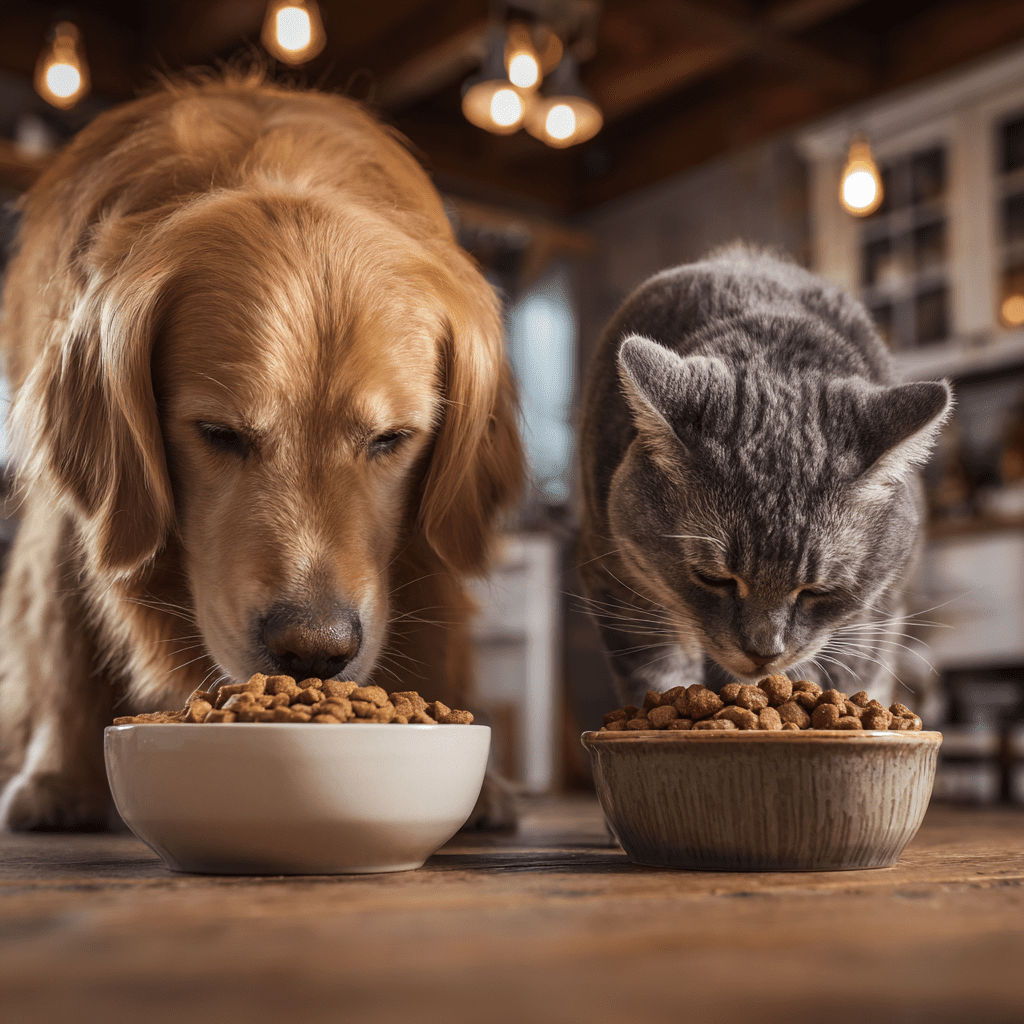Introduction: Why Food Transitions Matter
Every pet parent wants the best for their furry friend, and sometimes that means changing their food. Maybe your veterinarian recommended a new formula, or perhaps you’ve decided to upgrade to a healthier brand. While switching diets may sound simple, doing it too quickly can cause digestive upset, stress, and even refusal to eat.
Pets, especially dogs and cats, have sensitive digestive systems that require a gradual adjustment to new foods. In this article, we’ll guide you through how to transition your pet to a new diet safely and successfully, ensuring both their tummy and taste buds are happy.
Reasons You Might Switch Your Pet’s Diet
- Health Conditions
- Pets diagnosed with allergies, kidney disease, diabetes, or obesity may need specialized diets.
- Life Stage Changes
- Puppies and kittens require different nutrition than adult or senior pets.
- Weight Management
- Overweight pets might be switched to a lower-calorie or higher-protein formula.
- Ingredient Sensitivity
- Some pets develop sensitivities to certain proteins or ingredients, requiring alternatives.
- Upgrading Quality
- Owners often switch to premium or fresh-food diets for improved health benefits.
Regardless of the reason, the transition should always be handled with care.
The Golden Rule: Transition Slowly
The most important tip when changing your pet’s food is to make the transition gradual. Switching foods abruptly can cause:
- Vomiting
- Diarrhea
- Gas or bloating
- Loss of appetite
A 7–10 day transition plan is generally recommended, though sensitive pets may need up to 14 days.
Step-by-Step Guide to Transitioning Your Pet’s Food

Step 1: Prepare Before You Switch
- Consult your veterinarian to ensure the new food meets your pet’s needs.
- Buy enough of the current food to mix with the new one during the transition.
Step 2: Start with Small Portions
- Days 1–2: 75% old food, 25% new food
- Watch for signs of digestive upset.
Step 3: Gradually Increase New Food
- Days 3–4: 50% old food, 50% new food
- Days 5–6: 25% old food, 75% new food
- Day 7 onward: 100% new food
Step 4: Monitor Your Pet’s Response
Look for healthy digestion signs:
- Normal stool consistency
- Good appetite
- Normal energy levels
If you notice persistent diarrhea, vomiting, or refusal to eat, slow down the transition or consult your vet.
Special Considerations for Dogs
- Picky Eaters
- Try warming up wet food slightly or adding a topper (like plain boiled chicken or bone broth).
- Large Breeds
- Switch carefully, as they’re more prone to bloat and digestive stress.
- Puppies
- Their stomachs are extra sensitive, so extend the transition to 10–14 days.
Special Considerations for Cats
Cats are notorious for resisting dietary changes. Unlike dogs, they may refuse food entirely if they dislike it.
- Mix Wet and Dry: If you’re switching from dry to wet, start by mixing small amounts of wet into their kibble.
- Use Food Toppers: Sprinkle freeze-dried treats or tuna water to encourage eating.
- Patience Is Key: Cats may require up to 3 weeks to fully adjust.
⚠️ Important: Cats should never go more than 24 hours without eating, as fasting can lead to hepatic lipidosis, a dangerous liver condition.
Signs the Transition Is Going Well
- Firm, consistent stools
- Steady appetite
- No excessive gas or bloating
- Shiny coat and good energy
Common Mistakes to Avoid
- Switching Too Quickly
- This almost always causes stomach upset.
- Not Consulting a Vet
- Some medical conditions require specific diets; don’t guess.
- Changing Too Many Things at Once
- Don’t introduce new treats, supplements, or foods simultaneously.
- Ignoring Hydration
- Ensure your pet always has fresh water, especially if switching to dry food.
Transitioning to Different Diet Types
Switching from Kibble to Wet Food
- Mix wet food into kibble gradually.
- Expect softer stools during the adjustment.
Switching to Raw or Fresh Diets
- Requires extra caution due to bacteria risks.
- Transition slowly, and consult a vet or pet nutritionist.
Prescription Diets
- Always follow the vet’s instructions closely.
- Monitor health improvements along with digestion.
Real-Life Transition Stories
Bella the Beagle (Dog)
Bella’s owner switched her from a store-brand kibble to a higher-quality, grain-inclusive diet. By following the 7-day rule, Bella experienced no digestive issues and soon had shinier fur and more energy.
Oliver the Siamese (Cat)
Oliver’s vet recommended a urinary-health prescription diet. At first, Oliver refused to eat it, but his owner used tuna water as a topper and extended the transition to 3 weeks. Oliver now eats happily and remains healthy.
These examples show that patience and planning lead to success.
Final Tips for a Smooth Transition
- Stay Consistent: Feed at the same times daily.
- Track Changes: Keep a log of stool consistency, appetite, and energy.
- Don’t Panic: Minor soft stools or mild digestive changes are normal in the first few days.
- Reward Good Behavior: Praise your pet for trying the new food.
Conclusion: A Healthy Transition Leads to a Healthier Pet
Transitioning your pet to a new diet isn’t just about filling their bowl with different food—it’s about protecting their health and comfort during the change. With patience, careful planning, and vet guidance, your pet can enjoy the benefits of their new diet without the stress of digestive issues.
Remember: slow and steady wins the race when it comes to pet nutrition changes.
